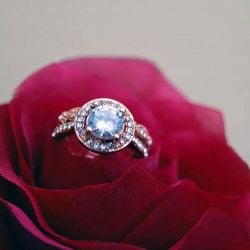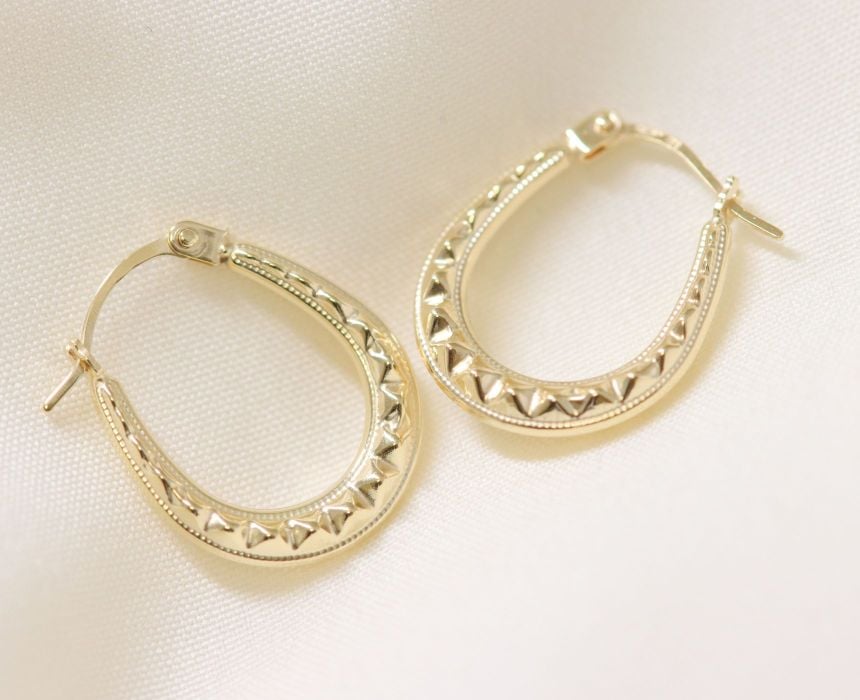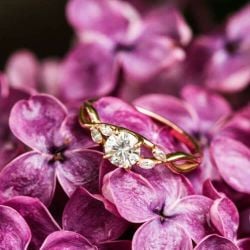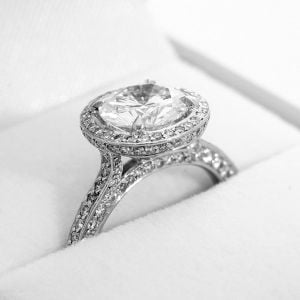- ‹Home
- ‹
- /
- Jewellery & Watch Guides
- /
- Edwardian Jewellery Guide

A Guide To Edwardian Jewellery
One of the shortest reigns in the history of the British monarchy, the Edwardian era still managed to make its mark in history, particularly in the art and design world. Spanning from 1901 to 1910, the ‘Belle Epoch’ or ‘Beautiful Era’ was shrouded by elegance and refinement that evolved jewellery design. Featuring delicate craftsmanship, intricate metalwork, and much more feminine styling, the Edwardian era jewellery abandoned the idea of the heavier, more ornate Victorian designs. Whether you’re interested in learning about it, buying, or adding some Edwardian jewellery to your preowned collection we’ve put together this helpful guide to what to know.Vintage Jewellery

The History Behind Edwardian Jewellery
The Edwardian era introduced some of the most beautifully delicate and sophisticated jewellery designs we have seen to date, and whilst their elaborate styling is one of the most prominent features of this period's adornments, some pieces hold much more meaningful representations. Amongst the plethora of social changes that took place during this time was the Suffragette Movement, marking a notable increase in female influence within society. The rise of this movement led to the design and production of ‘suffragette jewellery’, which was designed specifically to feature three coloured stones. Green to symbolise ‘give’, white to symbolise ‘women’ and violet to symbolise ‘votes’.
Cartier: The Official Royal Jewellery Supplier
Cartier's royal association with King Edward VII began in the early 20th century when the illustrious jewellery house earned the prestigious title of the "King's Jeweler“. King Edward VII of England, known for his impeccable taste and love for luxury, officially appointed Cartier Jewellery as the supplier of luxury jewellery to the British Royal Court. The decision was a result of Cartier's reputation for exquisite craftsmanship and innovative designs. The House of Cartier's dedication to creating unique and opulent pieces, often incorporating platinum, diamonds, and coloured gemstones, perfectly aligned with the refined aesthetic favoured by King Edward VII. This royal appointment solidified Cartier's status as a premier jeweller, and the association with the British monarchy further elevated the brand's global prestige. The legacy of Cartier as a jeweller to royalty continued, with subsequent generations of the Cartier family serving various royal families across Europe.
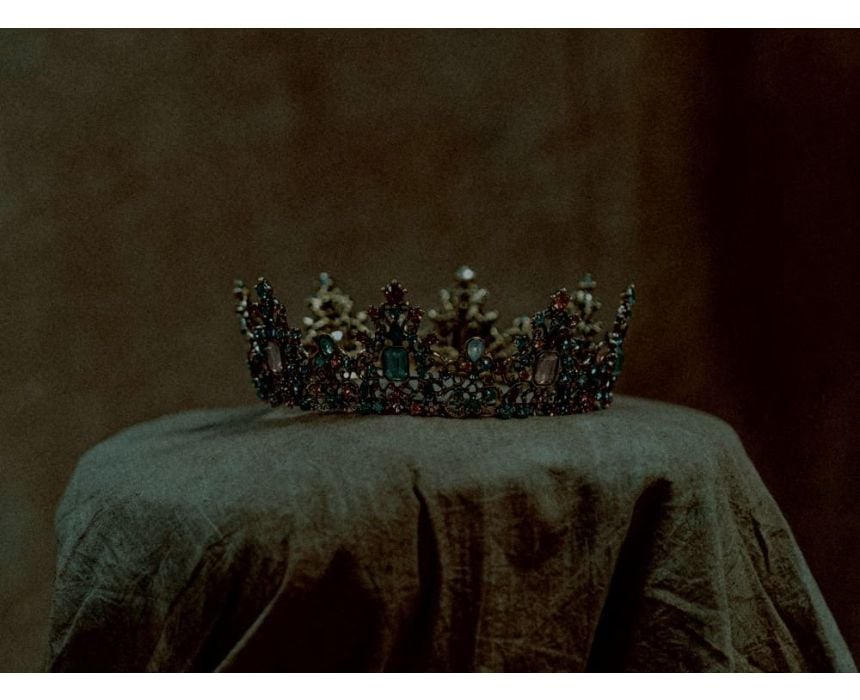
Edwardian Jewellery Styles
Edwardian jewellery embodies an ethereal femininity, offering a new alternative to the previous Victorian heaviness. The designs of Edwardian-era jewellery are delicate and often feature intricate styles, some including elements such as bows and ribbons, providing a sense of grace and romance within each intricate detail. Other popular design features of this time included nature-inspired elements such as leaves, vines, garlands, and floral motifs which shows the influence of the emerging Art Nouveau style of this era.
Tiaras featuring an abundance of diamonds and pearl filigree were highly popular throughout this time. Inspired by Edwardian opulence, these trinkets were frequently adorned by the more prominent fashionistas. For a more understated elegance, a popular choice was the bandeaux adorned with feather aigrettes. However, this didn't gain as much popularity as the tiara until later years, making it a modern-day stereotype for 1920s styling.
The era witnessed a shift in neckline trends, giving necklaces newfound importance. Colliers de Chien, or 'dog collars,' featuring ribbons with brooches or gemstones, and long pearl chains worn below the waistline were prevalent styles. Sautoirs, lengthy ropes of pearls or beads with fringed tassels, were wrapped around the neck in extravagant proportions. Cartier introduced the elongated lavalier necklace, while Boucheron's signature design showcased strung pearls with diamond flat beads called a Rondelle. Bracelets embraced ethereal motifs, often worn alone or featuring ornate front sections tapering into refined chain links.
Other jewellery pieces designed in the Edwardian era were so captivating that many styles are still replicated today. Edwardian rings, crafted from platinum and diamonds with intricate techniques like filigree and milgrain, remain exquisite choices for engagement rings. Earrings evolved from simple diamond studs to delicate openwork designs, including long glittering earrings with garland-style wreaths and fabric-like gossamer styles—all incorporating platinum, diamonds, pearls, and milgrain in true Edwardian fashion.

Edwardian Jewellery Materials
The expertly crafted jewellery created throughout King Edwards's reign was often created using hard-wearing yet delicate materials, making the way for a brand-new era of delicate, feminine pieces that would last.Platinum & Milgrain
The highly delicate design of Edwardian jewellery required a strong metal to be able to support such intricate details. Pioneered by Cartier, platinum jewellery was the dominant crafting metal, marking the beginning of the Edwardian era’s ‘white on white’ trend. This popular trend featured platinum components, sophisticatedly teamed with clear Diamonds or white pearls. This chic combination was popular throughout the Edwardian era, until 1914.
A defining feature of Edwardian jewellery, milgrain is a delicate and sophisticated decorative technique that adds unique styling and embellishment to each piece. Acquired from the French term for ‘a thousand grains’, this meticulous detailing method involves crafting numerous tiny, bead-like edges along the metalwork, resulting in a subtle yet stunning texture that beautifully frames gemstones. Frequently combined with filigree patterns, the milgrain technique showcases the Edwardian era's dedication to craftsmanship and attention to the smaller, more feminine details.

Diamonds, Pearls & Gemstones
Diamonds are a hallmark of Edwardian jewellery, often featuring old European cuts and rose cuts. The meticulous designs of the time were often used to elevate the quality and cut of the diamonds. Jewellery crafted in the Edwardian era also frequently included both natural and cultured pearls, adding a timeless classic feel to many Edwardian jewellery pieces. Coloured gemstone jewellery decorated with the likes of sapphires, emeralds, and rubies, as well as pastel-coloured stones, were also common features, often being combined with pearls and diamonds within the complex designs.
While diamond jewellery and the use of gemstones were very popular choices for Edwardian designs, the addition of pearls was a common choice among fashionable Edwardians. Pearls held an especially prevalent place in the grandeur of Edwardian jewellery and were prominently featured among the trinkets of the time.
A highly popular setting for diamonds during this time was the invisible setting, which cleverly gave the illusion of the diamond floating on the skin. A similarly popular setting style for gemstones was the filigree setting, created through the combination of fine beads and threads crafted from the chosen metal.

Edwardian Gemstone Cuts
While there were multiple gemstone cutting techniques used across the Edwardian era, jewellers of the time often embraced multiple methods within one piece of jewellery to create unique and intricate designs. In reflection of the evolving tastes of the time, and the advancements in gemstone cutting techniques, popular gemstone cuts of this era are less frequently used in modern jewellery designs.
Old European Cut
The old European cut was an evolution of the previously popular old mine cut and a precursor to today's round brilliant cut. This technique is characterised by a larger culet, a slightly smaller table, and a more rounded shape in comparison to later brilliant cuts.
The Rose Cut
The highly feminine rose cut was an extremely popular choice for Edwardian jewellery and featured a flatter base and a curved upper surface with multiple facets, designed to resemble a blooming rosebud.
The Old Mine Cut
This simplistic cut featured much fewer facets than that of the rose cut, which was often adorned for smaller diamonds to accentuate larger gemstones in intricate settings. Also referred to as the miners cut or cushion cut, it features a cushion-shaped outline within a less complex facet arrangement, showcasing the diamond's natural brilliance.
The Cabochon Cut
This cutting method was highly popular during the Edwardian era and involved shaping and polishing the stone into a smooth, rounded, and un-faceted form. This was particularly popular with Sapphires and Emeralds, which would be set in various pieces, adding a touch of colour to elegant Edwardian jewellery designs.
The Calbré Cut
Calbré cut gemstones were meticulously cut and shaped to fit together seamlessly, to enhance the overall design of the jewellery piece. Gemstones cut using this method were frequently used to create stunningly intricate patterns and inlays.
Second Hand Jewellery at Ramsdens
With new second-hand jewellery pieces being added to our stock, you can find a range of styles such as Edwardian jewellery or other great vintage pieces. Pre-owned vintage jewellery is the perfect way to add a touch of timeless elegance to your accessory collection. Not only can owning vintage jewellery be a valuable investment but also a source of uniqueness that you can’t always get from brand-new styles. Whether you're looking for a unique pre-owned engagement ring, or a stunning second-hand necklace, pre-owned jewellery offers a range of exquisite options.
SELECTION OF VINTAGE JEWELLERY





